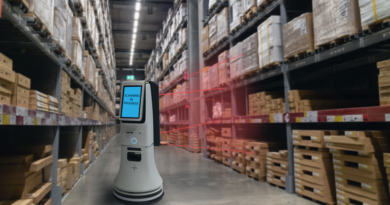What the growth of AIops solutions means for the enterprise
No exaggeration, digital transformation is progressing at breakneck speed, and it will only get faster as a result. More organizations will move to the cloud, embrace edge computing, and leverage artificial intelligence (AI) for business processes.
Data powers this fast and wild race. Therefore, for many businesses, data in its various forms is one of their most valuable assets. As businesses now have more data than ever before, managing and leveraging that data for greater efficiency has become a major concern. Key among these concerns is the inadequacy of traditional data management frameworks to handle the increasing complexity of the digitally oriented business environment.
The priorities have changed: customers are no longer satisfied with traditional immobile data centers and are now moving to powerful, on-demand, multi-cloud data centers. According to Forrester’s survey of 1,039 global application development and distribution professionals, 60% of technology professionals and decision makers use multi-audio, a number expected to grow to 81% in 12 months next. But perhaps the most important takeaway from the survey was that “90% of the multi-audio users who responded said it helped them achieve their business goals.”
Managing the complexities of multicloud data centers
Gartner also reports that enterprise multi-cloud deployments have become so ubiquitous that at least by 2023, “the top 10 public cloud providers will control more than half of the total cloud market.” public cloud.”
But that’s not the place to stop, customers are also looking for multi-cloud, private, or hybrid data centers that provide full visibility into the enterprise-scale technology stack and correlation. between domains of IT infrastructure components. While logical, these features come with great complexity.
Typically, layers on top of cross-domain configuration layers are typical for multi-cloud environments. However, as new cloud computing features become mainstream, new layers are required, further complicating an already complex system.
This is further complicated by the deployment of 5G networks and edge data centers to meet the growing cloud-based demands of the post-pandemic global climate. Ushering in what many call “a new wave of data centers,” this rebuilding creates even greater complexity that puts enormous strain on traditional operating models.
Change is necessary, but since the slightest change in any infrastructure, security, network, or application layer can lead to large-scale butterfly effects, enterprise IT teams must accept the fact that ‘they can’t do it alone.
AIops as a solution to multi-cloud complexity
the siloed nature of multicloud operations management has resulted in the increasing complexity of IT operations. His solution? AI for IT operations (AIops), an AI industry category coined by tech research firm Gartner in 2016.
“The combination of big data and ML [machine learning] in the automation and improvement of IT operation processes,” the detection, monitoring, and analytic capabilities of AIops allow it to intelligently comb through countless disparate components of data centers to provide a holistic transformation of its operations.
By 2030, the rise in data volumes and its resulting increase in cloud adoption will have contributed to a projected $644.96 billion global AIops market size. What this means is that enterprises that expect to meet the speed and scale requirements of growing customer expectations must resort to AIops. Else, they run the risk of poor data management and a consequent fall in business performance.
This need creates a demand for comprehensive and holistic operating models for the deployment of AIops and that is where Cloudfabrix comes in.
AIops as a composable analytics solution
Inspired to help enterprises ease their adoption of a data-first, AI-first, and automate-everywhere strategy, Cloudfabrix today announced the availability of its new AIops operating model. It is equipped with persona-based composable analytics, data and AI/ML observability pipelines, and incident-remediation workflow capabilities. The announcement comes on the heels of its recent release of what it describes as “the world-first robotic data automation fabric (RDAF) technology that unifies AIops, automation, and observability.”
Identified as key to scaling AI, composable analytics give enterprises the opportunity to organize their IT infrastructure by creating subcomponents that can be accessed and delivered to remote machines at will. Featured in Cloudfabrix’s new AIops operating model is a composable analytics integration with composable dashboards and pipelines.
Offering a 360-degree visualization of disparate data sources and types, Cloudfabrix’s composable dashboards feature field-configurable persona-based dashboards, centralized visibility for platform teams, and KPI dashboards for business-development operations.
AIops could process all data types to improve their quality and glean unique insights through real-time observability pipelines. This stance is reiterated in Cloudfabrix’s adoption of not just composable pipelines, but also observability pipeline synthetics in its incident-remediation workflows.
In this synthesis, likely malfunctions are simulated to monitor the behavior of the pipeline and understand the probable causes and their solutions. Also included in the incident-remediation workflow of the model is the recommendation engine, which leverages learned behavior from the operational metastore and NLP analysis to recommend clear remediation actions for prioritized alerts.
To give a sense of the scope, the launch of its composable analytics is “solely focused on the BizDevOps personas in mind and transforming their user experience and trust in AI operations.”
“Focuses on automation, by seamlessly integrating AIops workflows in your operating model and building trust in data automation and observability pipelines through simulating synthetic errors before launching in production.” Some of those operational personas for whom this model has been designed include cloudops, bizops, GitOps, finops, devops, DevSecOps, Exec, ITops, and serviceops.
Founded in 2015, Cloudfabrix specializes in enabling businesses to build autonomous enterprises with AI-powered IT solutions. Although the California-based software company markets itself as a foremost data-centric AIops platform vendor, it’s not without competition, especially with contenders like IBM’s Watson AIops, Moogsoft, Splunk, and others.




